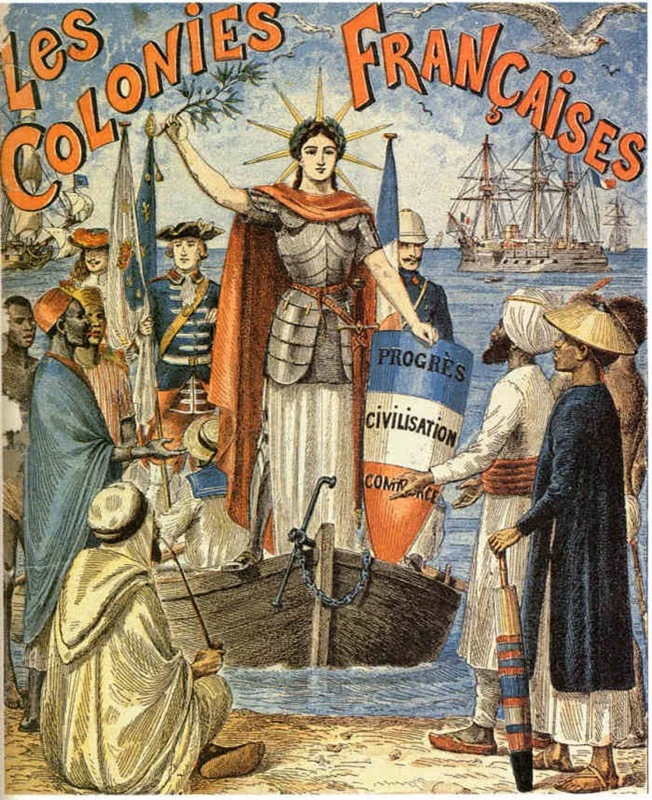Empire after Napoleon
 By 1815, France had all but lost its empire. The success of the Haitian Revolution in 1804 and the sale of the Louisiana Territory had smashed French imperial ambitions in the Americas. French India had been reduced to pinprick trading enclaves. France had sent exploratory forays to the Pacific, but could not establish territorial control in the face of British naval superiority. And the second, decisive fall of Napoleon after Waterloo had demolished the French empire in Europe. Indeed, far from dominating the sovereignty of others, France was under military occupation by the Allied powers until 1818.
By 1815, France had all but lost its empire. The success of the Haitian Revolution in 1804 and the sale of the Louisiana Territory had smashed French imperial ambitions in the Americas. French India had been reduced to pinprick trading enclaves. France had sent exploratory forays to the Pacific, but could not establish territorial control in the face of British naval superiority. And the second, decisive fall of Napoleon after Waterloo had demolished the French empire in Europe. Indeed, far from dominating the sovereignty of others, France was under military occupation by the Allied powers until 1818.
But this dissolution of the “First” French Empire turned out to be a momentary pause in French imperial expansion. Scarcely more than a decade after the occupation ended, France invaded Algeria, launching the Second French Empire. That empire was global in scope, trailing only the British Empire in terms of size and influence. In this class, we will follow the transformations of French empire, from roughly 1815 until today. Topics will include the Bourbon Restoration and imperial rebirth; the conquest and settlement of Algeria; the concept of “informal” empire; the relations of republican ideology and colonial rule; decolonization during the 20th century and the extent to which we can speak of the French empire today.
Our sources will be varied: memoirs, speeches, political theory, films, and economic discourse. All readings will be in English; no knowledge of French is required. As we will see, these sources speak, and remain silent, in complicated ways. One of the main aims of the class will be to consider the particular nuances all these different kinds of source contain. To which audiences are these sources pitched and how might that shape their content? What is the conceptual significance of using metaphorical language, psychological observation, or economic theory to embed your claims? What might the visual language of a painting tell us about French imperial ideology? To what extent can we build robust interpretations of the past when working with translated sources? Teasing out all this meaning from sources is the task – and the delight – of the historian.
Image: Georges Daschner, Les colonies françaises, cover illustration for a schoolbook, c 1900
